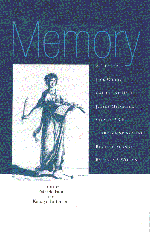Book contents
- Frontmatter
- Contents
- Introduction
- 1 Disturbing Memories
- 2 ‘Turning a Blind Eye’: Memories of Empire
- 3 Memory and the Making of Fiction
- 4 Memory in Oral Tradition
- 5 Memory and Psychoanalysis
- 6 When Memory Fails
- 7 How Brains Make Memories
- 8 Memory and Neural Networks
- Notes on Contributors
- Acknowledgements
- Index
Introduction
Published online by Cambridge University Press: 05 June 2012
- Frontmatter
- Contents
- Introduction
- 1 Disturbing Memories
- 2 ‘Turning a Blind Eye’: Memories of Empire
- 3 Memory and the Making of Fiction
- 4 Memory in Oral Tradition
- 5 Memory and Psychoanalysis
- 6 When Memory Fails
- 7 How Brains Make Memories
- 8 Memory and Neural Networks
- Notes on Contributors
- Acknowledgements
- Index
Summary
In his Vie d'Henri Brulard, the French novelist Henri Stendhal articulated the difficulties faced by an autobiographer endeavouring to recapture his life of thirty years earlier: ‘I make many discoveries … They are like great fragments of fresco on a wall, which, long forgotten, reappear suddenly, and by the side of these well-preserved fragments there are … great gaps where there's nothing to be seen but the bricks of the wall. The plaster on which the fresco had been painted has fallen and the fresco has gone forever.’ The richness of human life depends on our ability to remember the past, yet – like Stendhal – we are painfully aware of our memory's selectivity and vulnerability. Whether we are trying to recall particular details of our own lives, or to construct historical narratives describing broader cultural changes, we must all confront the gaps and distortions inherent in recapturing the past. This perplexing faculty, so central to our existence, exerts a universal fascination: as individuals, we wish to learn more about how our own memory functions; as members of society, we are concerned to appreciate the multiple ways in which our history is preserved. What we remember is intimately linked to how we remember, but innumerable approaches have been devised to explore that complex web of connections. The eight chapters in this volume, all by leading experts in their fields, transcend this diversity to address together the relationships between individual experience and collective memory.
Information
- Type
- Chapter
- Information
- Memory , pp. 1 - 9Publisher: Cambridge University PressPrint publication year: 1998
Accessibility standard: Unknown
Why this information is here
This section outlines the accessibility features of this content - including support for screen readers, full keyboard navigation and high-contrast display options. This may not be relevant for you.Accessibility Information
- 1
- Cited by
